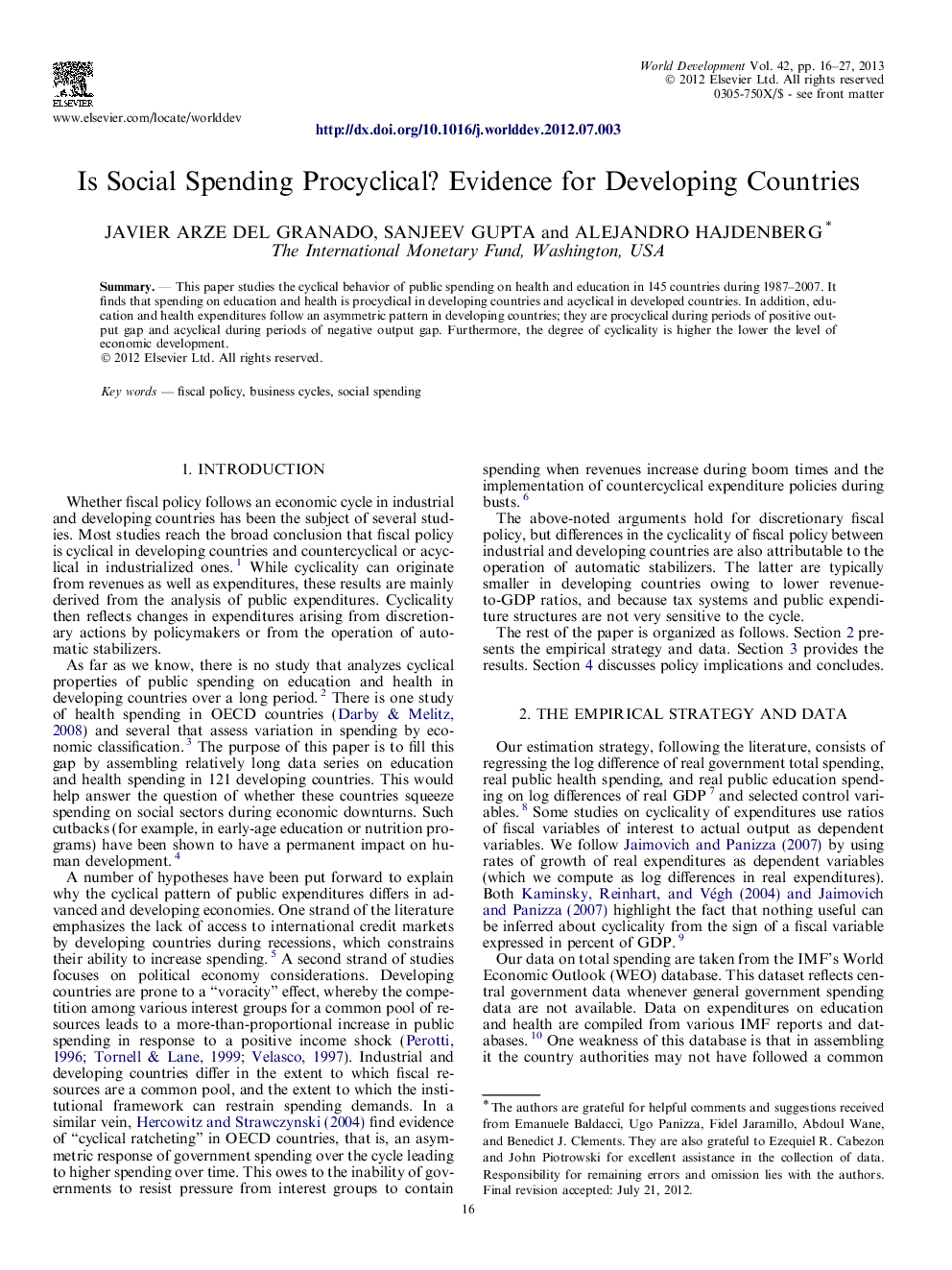| Article ID | Journal | Published Year | Pages | File Type |
|---|---|---|---|---|
| 990724 | World Development | 2013 | 12 Pages |
Abstract
SummaryThis paper studies the cyclical behavior of public spending on health and education in 145 countries during 1987–2007. It finds that spending on education and health is procyclical in developing countries and acyclical in developed countries. In addition, education and health expenditures follow an asymmetric pattern in developing countries; they are procyclical during periods of positive output gap and acyclical during periods of negative output gap. Furthermore, the degree of cyclicality is higher the lower the level of economic development.
Related Topics
Social Sciences and Humanities
Economics, Econometrics and Finance
Economics and Econometrics
Authors
Javier Arze del Granado, Sanjeev Gupta, Alejandro Hajdenberg,
